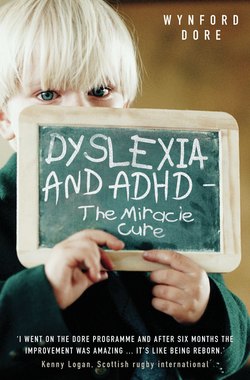Читать книгу Dyslexia and ADHD - The Miracle Cure - Wynford Dore - Страница 5
На сайте Литреса книга снята с продажи.
FOREWORD
ОглавлениеFar too many people are still needlessly struggling with reading, struggling with attention issues, struggling with co-ordination and, if all that wasn’t bad enough, often struggling with poor short-term memory as well. Research is showing that 80% of those with reading difficulties also have attention difficulties and, in an attempt to address this, we have changed the title for this paperback edition to include reference to ‘ADHD’. Research suggests that the root cause of all of these symptoms lies in one part of the cerebellar, and that by developing that one area, many (if not all), of those symptoms improve significantly. This is why it is so important to address the source of these symptoms.
The approach described in this book is not a ‘one size fits all’ approach; it’s an individualised approach that focuses on bringing out all of the hidden potential of that individual. One surprising aspect of the results we see is that, often, a large number of further skills are improved over the course of the programme. This is in contrast to the many interventions that tackle these problems from the symptom end – there are usually too many symptoms to be able to deal with them all individually, hence tackling the root cause is a far better idea altogether.
It was expected that the hardback edition of this book would be controversial, and it was. Thousands seemed to appreciate ‘an explanation at last’ and then there were a few who didn’t like it so much. Most of this latter group fitted into two categories; they were either specialists in phonics or they are engaged in research funded directly or indirectly by drug companies. So the arguments continue to abound ‘Does dyslexia exist?’, ‘Can it be cured?’ or ‘Is ADHD just an excuse?’ If we just asked teachers and parents these same questions we could get some very clear answers. By then asking them ‘What works?’ we would get some more enlightening answers.
This paperback edition is being prepared at a time when yet another research study on reading has just been published. This latest study says that the British Government has spent half a billion pounds in the last few years on literacy interventions with no real impact on reading ability. What a disappointment (but maybe no surprise) to those who are suffering, all their families and all those teachers who put their heart, mind and soul into taking the latest advice from education advisors about how to teach those with dyslexic type symptoms. This book shows that these failures are not the fault of teachers or parents. An international benchmarking standard is desperately needed for all educational interventions. Only when that has happened will we be able to determine the best and most effective tools to use in our classrooms.
A recent and important development for all educational professionals and parents is the availability of an on-line assessment (ACE) that is neurologically based, fun for kids to do and provides teachers and parents with vital data about the underlying potential that a child may have. How amazing will a teacher find it to run a simple computer-based assessment on all pupils in the class to get an understanding of their learning style, to ascertain who has hidden potential and who in the class is working exceptionally hard to achieve their results? When it is used more generally it will make us focus on the enormous talent that so many children have despite their being constrained by the physiological reasons that makes reading or concentrating for long periods difficult.
And there is more hope – a US-based charity is funding a very large independent study on the effect of the theories behind the Dore Programme. It is hoped that it will not only provide crucial data on the various symptoms being addressed but may also provide a blueprint for benchmarking that can be applied to all interventions used for these symptoms.
